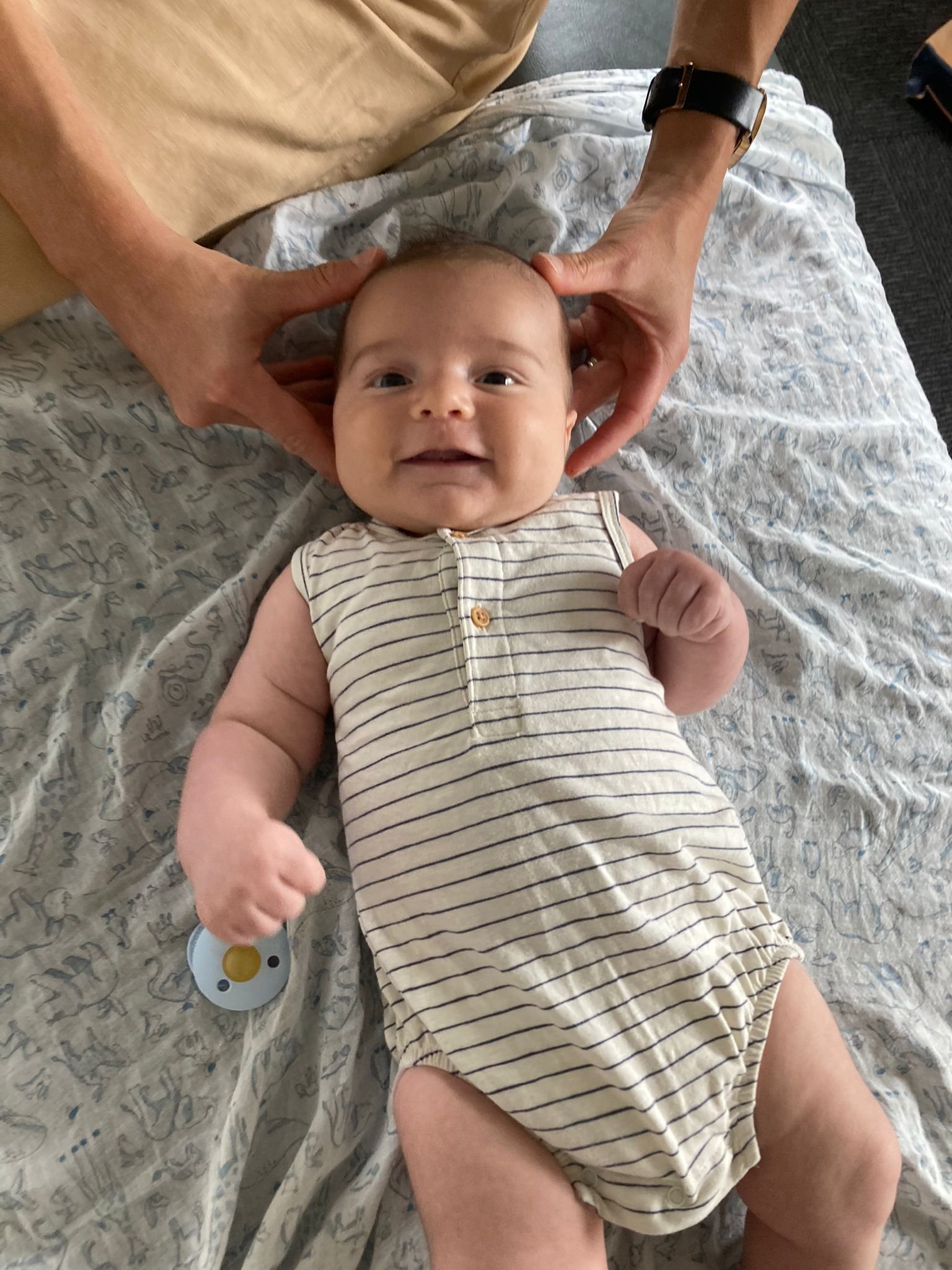
Paediatric Chiropractor.
Chiropractic for Babies & Children
Parents and guardians access chiropractic care for their children for a wide range of conditions and complaints, including assessing the neuro-musculoskeletal system and maintaining general health and wellbeing.
Common conditions parents may seek chiropractic care for children include:
Posture concerns
Colic/Unsettled baby/Reflux
Neck pain and/or headaches
Difficulty with breastfeeding
Tongue Ties (Tethered Oral Tissues/Oral Ties)
Head preference/Flat head (Plagiocephaly)
If you have any questions or concerns over the safety or benefits of chiropractic techniques for children, Dr Carla, chiropractor, will be happy to discuss this with you during the initial consultation, or when you call to book your consultation
Tongue-Ties & Lip-Ties
The tongue plays a vital role in sucking, swallowing and breathing. Tongue-ties and lip-ties occur when the frenulum, the soft tissue connecting the lip or tongue to the gums, is too short or too thick and restricts the tongue to function optimally.
Typical symptoms may include:
Difficulty latching to the breast or bottle
Poor weight gain
Damaged nipples
Colic or reflux
Dr Carla collaborates with local dentists to assist with the management of oral ties.
Flat Head/Plagiocephaly
Plagiocephaly refers to a condition characterised by the asymmetrical shaping of the skull in infants. It often results in a flat spot on the back or side of the head. This often happens following forces in utero, during birth or post birth. Minor variations in head shape are common at birth and typically resolve on their own within the first few weeks. However, positional plagiocephaly refers to persistent or new asymmetry in babies older than 6 weeks. Spinal tension can often cause a baby to favour turning their head to one direction. When an infant consistently rests in the same position, it causes the skull to flatten in that area due to prolonged pressure.
Early detection and intervention is important. Recent research suggests that addressing cranial shape is not the primary goal; it also involves addressing potential developmental challenges in movement and learning that may require intervention during the primary school years (1). Therefore, supporting and monitoring our children from infancy and beyond for developmental outcomes is crucial in a comprehensive approach.
If you suspect your baby has plagiocephaly, Dr Carla is trained to assess, measure, and support your baby's health outcomes. Through measurements and imaging, she evaluates the severity and recommends appropriate care plans. This approach, coupled with tracking developmental milestones, provides a clear overview of progress and reassures parents about their baby’s care and long-term outcomes.
(1)Bialocerkowski, A.E., Vladusic, S.L. and Wei Ng, C., 2008. Prevalence, risk factors, and natural history of positional plagiocephaly: a systematic review. Developmental Medicine & Child Neurology, 50(8), pp.577-586.
